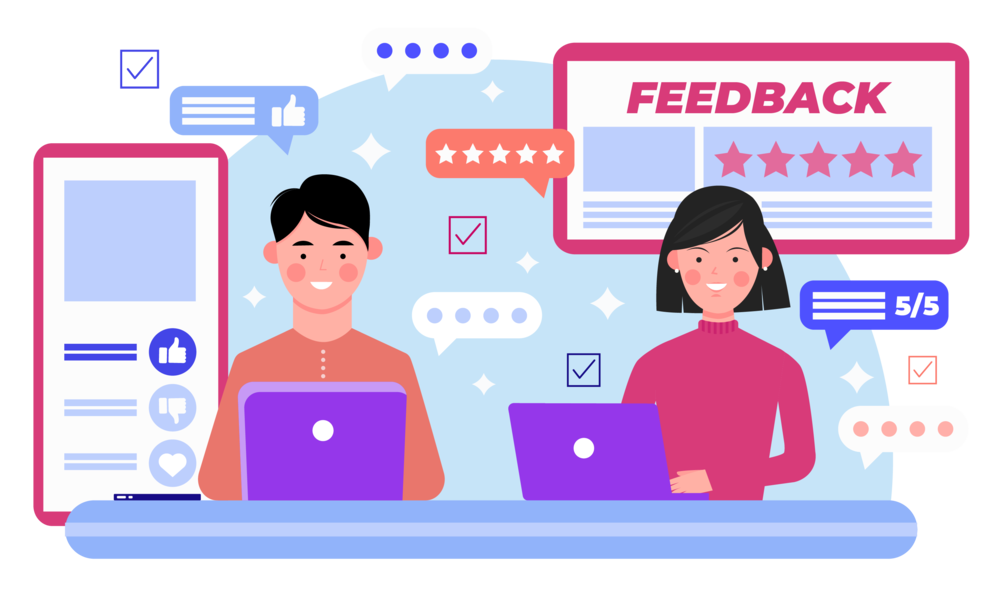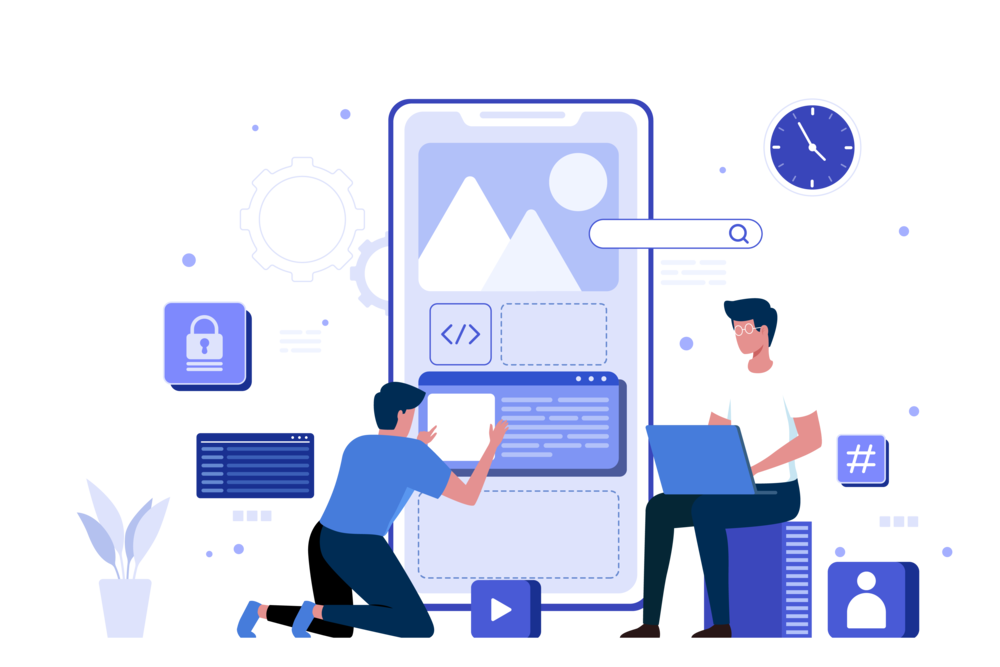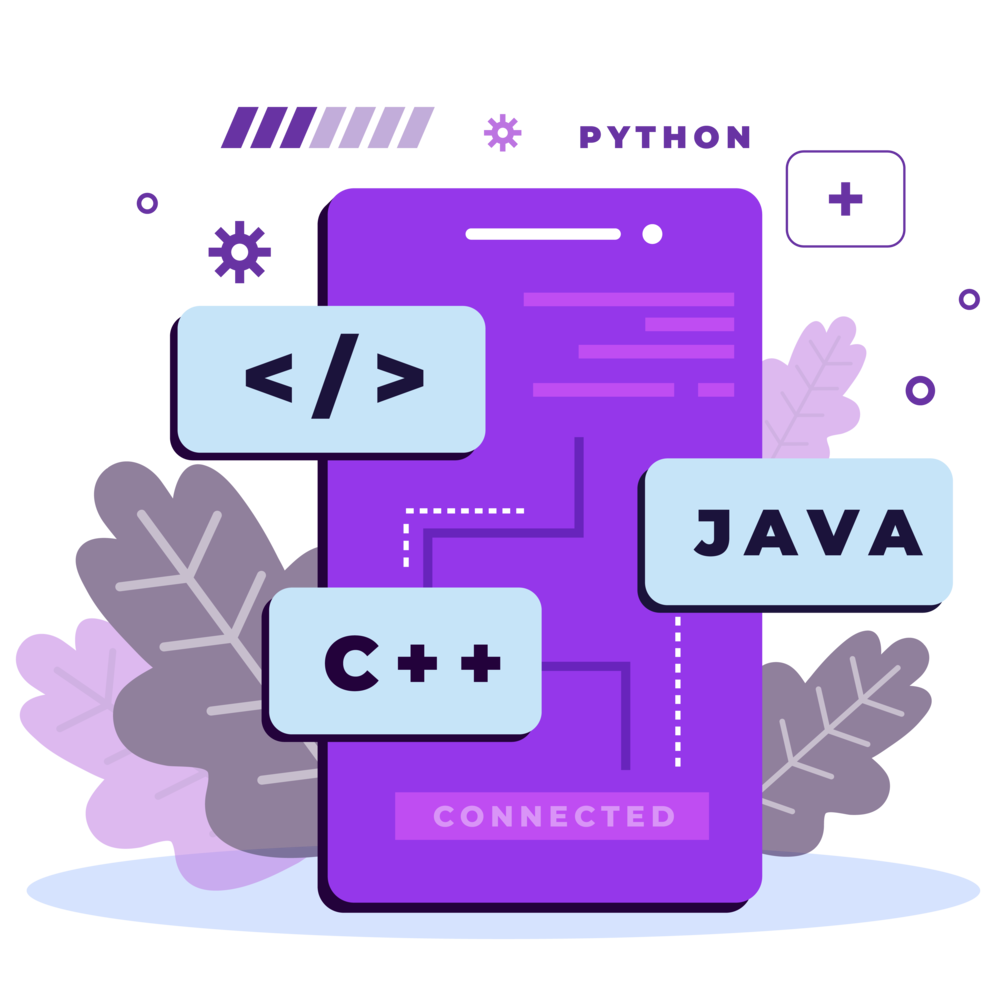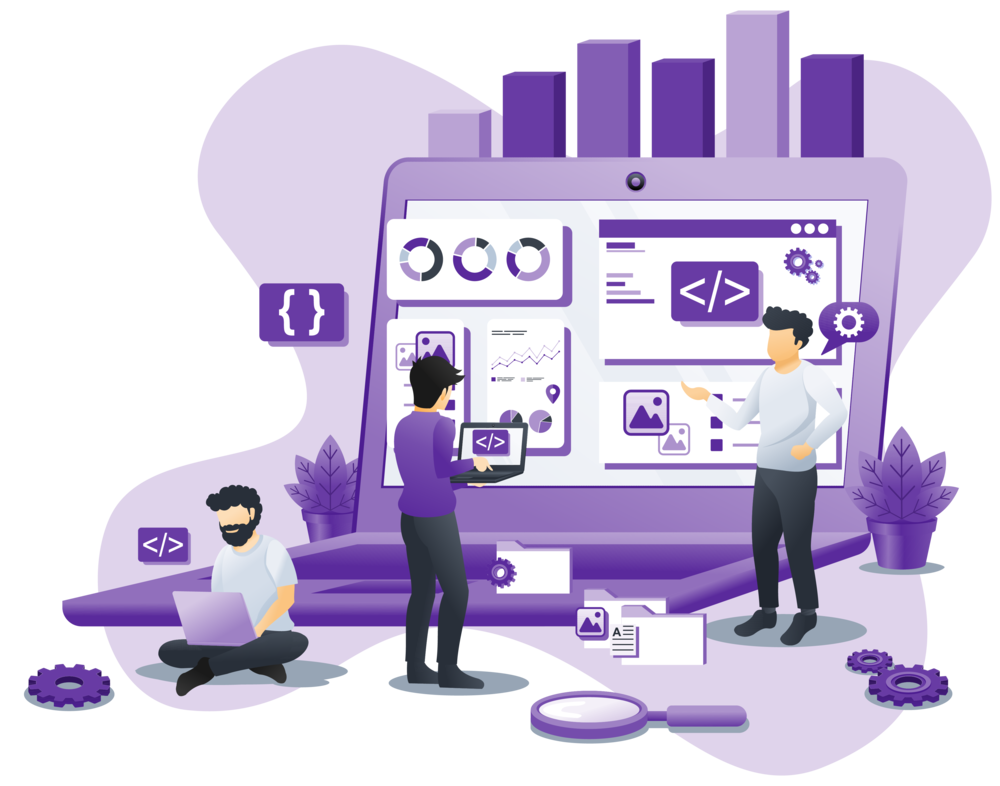Top 10 Types of Software Used in Retail Industry
To run a retail business, it is impossible to operate it manually. Technology or software can help retailers to improve their operations, enhance their customer experience, and gain a competitive advantage in the market. In a wide pool of software options, which types of software are popular in the retail industry? For your reference, let’s take a look at our summary about 10 common types of software used in the retail industry.
1. The importance of using software in retail industry
Using software in the retail industry is very important for various reasons. Here are some of the benefits of using software in the retail industry:
Automate and streamline processes
Such as inventory management, point of sale, order fulfillment, delivery, etc. This can reduce human errors, save time and costs, and increase efficiency and productivity. For example, an electronic point of sale (ePOS) software can help retailers to process transactions, accept payments, print receipts, and manage cash registers at the store, while also handling customer accounts, managing in-store inventory, and more.
Collect and analyze data from various sources
Data includes customer behavior, preferences, feedback, purchase history, etc. This can help retailers to understand their customers better, segment them into different groups, personalize their offers and promotions, increase their retention and loyalty, and improve their satisfaction. For example, a CRM software can help retailers to collect and analyze customer data, segment customers, personalize offers, increase retention, and improve satisfaction.
Adapt to new consumer trends and technologies
Such as mobile payments, contactless transactions, augmented reality shopping, etc. This can help retailers to create a seamless and engaging omnichannel experience for their customers, who can shop anytime, anywhere, and on any device. For example, an eCommerce software can help retailers to create and manage their online store, website, and mobile app.
Gain a competition rate
By enabling them to offer smart and innovative solutions that meet the changing needs and expectations of their customers. For example, inventory management software can help retailers to track and manage their stock levels, orders, deliveries, and returns across multiple channels and locations. This can help retailers to optimize their inventory levels, reduce waste and theft, forecast demand, and replenish efficiently.

2. Top 10 Types of Software Used in Retail Industry
There are many types of software that are used in the retail industry to manage various aspects of the business, such as sales, inventory, customer service, marketing, accounting.
Point of Sale (POS) Software
This type of software is used to process transactions, accept payments, print receipts, and manage cash registers at the store. POS software can also integrate with other systems such as inventory, CRM, loyalty programs, etc. Some examples of POS software are Shopify, Square, Lightspeed, etc.
Inventory Management Software
It is used to track and manage the stock levels, orders, deliveries, and returns of products across multiple channels and locations. Inventory management software can also help with forecasting demand, optimizing replenishment, and reducing waste and theft. Some examples of inventory management software are Zoho Inventory, TradeGecko, Vend.
Customer Relationship Management (CRM) Software
CRM is normally used to collect and analyze customer data, such as preferences, behavior, feedback, and purchase history. CRM software can also help with segmenting customers, personalizing offers, increasing retention, and improving satisfaction. You can refer some available CRM softwares such as Salesforce, HubSpot, Creatio.
eCommerce Software
It is used to create and manage online stores, websites, and mobile apps that sell products or services to customers. eCommerce software can also help with designing layouts, adding products, setting prices, processing payments, and shipping orders. Some examples of eCommerce software are Magento, WooCommerce, BigCommerce.
Marketing Software
It is used to plan and execute marketing campaigns across various channels and platforms, such as email, social media, webinars, blogs, etc. Marketing software can also help with creating content, generating leads, measuring performance, and optimizing ROI. Some examples of marketing software are Mailchimp, Hootsuite, HubSpot Marketing Hub.
Accounting Software
In order to record and manage the financial transactions and reports of the business, such as income statement, balance sheet, cash flow statement. Accounting software can also help with invoicing, billing, tax compliance, and budgeting. Some examples of accounting software are QuickBooks, Xero, FreshBooks.
Human Resources (HR) Software
This type of software is used to manage the employees and staff of the business, such as hiring, training, payroll, benefits, performance appraisal, etc. HR software can also help with scheduling, attendance, communication, and employee engagement. Some examples of HR software are BambooHR, Zoho People, Gusto.
Enterprise Resource Planning (ERP) Software
ERP is used to integrate and streamline the core business processes and functions of the business, such as sales, inventory, customer service, marketing, accounting, HR. ERP software can also help with improving efficiency, productivity, collaboration, and decision making. Some popular software can be named such as Oracle NetSuite ERP, SAP Business One, Microsoft Dynamics 365 Business Central.
Business Intelligence (BI) Software
This type of software is used to collect and analyze data from various sources and systems, such as POS, inventory, CRM, eCommerce, marketing, accounting, ERP. BI software can also help with creating dashboards, reports, charts, graphs, and insights that can help with understanding trends, patterns, opportunities, and challenges. Some examples of BI software are Tableau, Power BI, Zoho Analytics.
Artificial Intelligence (AI) Software
This type of software is used to enhance and automate various aspects of the business using machine learning, natural language processing, computer vision and other technologies. AI software can also help with providing recommendations, predictions personalization, chatbots, voice assistants, image recognition and other features. Some examples are IBM Watson, Google Cloud AI, Amazon AI Services.

3. Which software is best for small retail businesses?
Different software may suit different needs and preferences. Here are some of the available software that are popular and well-reviewed by small retail businesses:
• Square Point of Sale: A free software allows you to process transactions, accept payments, print receipts, and manage cash registers at the store. It also integrates with other systems such as inventory, CRM, loyalty programs, etc. It is easy to use and has a user-friendly interface. You can also use it online, over the phone, or out in the field.
• Lightspeed: A cloud-based retail management software that helps you with omnichannel sales, inventory management, customer service, reporting, and analytics. It also offers features such as eCommerce integration, loyalty programs, gift cards, etc. It is suitable for small to medium-sized retailers who want to grow their business and reach more customers.
• Shopify: It helps you create and manage your online store, website, and mobile app. It also provides you with tools such as POS, inventory management, marketing, payment processing, shipping, etc. It is ideal for small retailers who want to sell their products online and expand their market.
• Zoho Inventory: You can use it to track and manage your stock levels, orders, deliveries, and returns across multiple channels and locations. It also helps you with demand forecasting, replenishment optimization, waste and theft reduction, etc. It is compatible with various platforms such as Shopify, Amazon, eBay, etc. It is suitable for small retailers who want to streamline their inventory operations and improve their efficiency.
• HubSpot CRM: A CRM software that helps you collect and analyze customer data, such as preferences, behavior, feedback, and purchase history. It also helps you segment customers, personalize offers, increase retention, and improve satisfaction. It integrates with various tools such as email marketing, social media marketing, webinars, blogs, etc. It is ideal for small retailers who want to build long-term relationships with their customers and increase their loyalty.

4. Software in retail: Buy available softwares or develop customized ones?
The decision to buy or develop software for your retail business depends on various factors, such as your business goals, needs, preferences, budget, resources, and time. Here are some of the pros and cons of both options that you may want to consider
Buying available softwares:
• Pros:
- Save time and money by using a ready-made solution that has been tested and proven by other businesses.
- Benefits from the features, updates, and support provided by the software vendor.
- Access the software from anywhere and anytime using a web browser or a mobile app.
• Cons:
- Compromise on some of your specific needs and preferences, as the software may not be fully customizable or compatible with your existing systems.
- Pay recurring fees or subscriptions for using the software, which may increase over time.
- Deal with security and privacy risks, as your data is stored on a third-party server.
Developing softwares:
• Pros:
- Full control and ownership over the software, as you can design it according to your exact needs and preferences.
- Differentiate yourself from your competitors by offering a unique and innovative solution that meets the changing demands and expectations of your customers.
- Integrate the software with your existing systems and processes, and optimize it for your specific business goals and challenges.
• Cons:
- Invest more time and money upfront to develop the software from scratch or hire a software development team.
- Deal with the maintenance, updates, and troubleshooting of the software, which may require technical skills and resources.
- Face the risks of failure, bugs, or errors in the software, which may affect your business operations and reputation.
VNEXT Global is a trusted retail software development company. With 14+ years of experience, we certainly can help you to optimize your business digitalization within a small budget and short time.
Here is a successful project that we joined to build a sports equipment sales system and a management system: Case Study: Web App for A Sportswear Store.

5. Cost to develop a customized retail software
The cost of developing a customized software depends on various factors, such as the type, size, complexity, features, platforms, technologies, and resources of the software project.
According to the web search results, the average cost of custom software development ranges from $10,000 to $500,000 or even more. However, this is a very broad range that does not reflect the specific details of each software project. To get a more accurate estimate, you need to consider the following factors:
• Type: The type of software project determines the scope, functionality, and purpose of the software. For example, a content management system (CMS) may have different features and costs than a customer relationship management (CRM) system or an e-commerce solution. The type of software project also affects the choice of technologies and platforms that are suitable for the software.
• Size: The size of a software project refers to the number of features, modules, screens, pages, users, and data that the software needs to handle. The larger the software project, the more time, effort, and resources it will require to develop and maintain. The size of a software project also affects the complexity and quality of the software.
• Complexity: The complexity of a software project refers to the level of difficulty and challenge involved in developing and testing the software. The more complex the software project, the more skills, expertise, and experience it will require from the developers and testers. The complexity of software projects also affects the risk and uncertainty of the software.
• Features: The features of a software project refer to the specific functionalities and capabilities that the software needs to provide to the users. The more features the software project has, the more value and benefit it will deliver to the users. However, adding more features also increases the cost and time of development and testing.
• Platforms: The platforms of software projects refer to the devices and operating systems that the software needs to run on. For example, a web application may run on browsers such as Chrome or Firefox, while a mobile application may run on Android or iOS devices. The choice of platforms affects the compatibility and performance of the software.
• Technologies: The technologies of software projects refer to the programming languages, frameworks, libraries, tools, and methodologies that are used to develop and test the software. For example, a web application may use HTML, CSS, JavaScript, React, Node.js, MongoDB, etc., while a mobile application may use Java, Kotlin, Swift, Flutter, Firebase, etc. The choice of technologies affects the quality and efficiency of the software.
• Resources: The resources of a software project refer to the human and material resources that are involved in developing and testing the software. For example, a software project may need developers, testers, designers, managers, analysts, etc., as well as hardware, software, servers, cloud services, etc. The availability and cost of resources affect the timeline and budget of the software.

Final Thought:
If you are choosing the best software for your business, here are some suggestions and factors to consider. First, you need to identify your business goals and challenges, such as increasing sales, managing inventory or improving customer service. Then, with your budget and resources, you decide to invest in customized software or an available one.
If you are looking for a trusted IT partner, VNEXT Global is the ideal choice. With 14+ years of experience, we surely can help you to optimize your business digitalization within a small budget and short time. Currently, we have 400+ IT consultants and developers in Mobile App, Web App, System Development, Blockchain Development and Testing Services. We have provided solutions to 600+ projects in several industries for clients worldwide. We are willing to become a companion on your way to success. Please tell us when is convenient for you to have an online meeting to discuss this further. Have a nice day!












